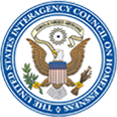Shelter Plus Care
The Shelter Plus Care Program (S+C) is permanent supportive housing designed to link rental assistance to supportive services for hard to reach homeless persons with disabilities—primarily those who are seriously mentally ill, have chronic problems with alcohol, drugs, or both, or who have acquired immunodeficiency syndrome (AIDS) and related diseases—and their families. The program provides grants to be used for permanent housing, which must be matched in the aggregate by supportive services that are equal in value to the amount of rental assistance and appropriate to the needs of the population to be served. The program is very flexible, providing rental assistance in a variety of housing settings from group homes to independent living arrangements.
Eligible applicants (states, local governments, and public housing agencies) may request assistance under one or more of the four components of the S+C program. The four program components are:
- Tenant Based Rental Assistance: An applicant under the TBRA component may request funds to provide rental assistance on behalf of participants who choose their own housing units. In order to deliver supportive services in a convenient manner, applicants may require participants to live in specific structures or areas for part or all of their term of assistance. This assistance is provided for 5 years. Applicants must contract with unit owners directly.
- Project-Based Rental Assistance: Applicants under this component may request grant funds to provide rental assistance through a contract with a building owner for an existing structure. An applicant must enter into a contract with the building owner for the full 5 or 10 year assistance period. Participants must live in an assisted unit on a specified property, and do not retain the rental assistance if they move.
- Sponsor-Based Rental Assistance: Applicants must subcontract with a private nonprofit organization or a community mental health agency established as a private nonprofit to provide rental assistance. Under this component, an applicant may request a 5 year grant to provide rental assistance through a contract with a private nonprofit organization or a community mental health agency established as a private nonprofit. The housing units to be used must be owned or leased by the sponsor.
- Single Room Occupancy Assistance: This component is designed to add standard SRO units to the local housing supply and to use them to assist homeless persons with disabilities. The units to be used must be in need of moderate rehabilitation. Rental assistance for SRO units is provided for a 10 year period. Owners are compensated through the rental assistance payments, some of the rehabilitation costs, as well as the other costs of owning and maintaining the property. Applicants must subcontract with a Public Housing Agency (PHA) to administer the rental housing assistance.
To access the guidebook for service providers on the Continuum of Care program produced by HUD go to:
http://www.hudhre.info/documents/CoC101.pdf
Eligible Applicants:
State and local governments and public housing agencies (PHAs)
Eligible Beneficiaries:
S+C assists hard to serve homeless individuals with disabilities and their families. These individuals primarily include those with serious mental illness, chronic problems with alcohol and/or drugs, and HIV/AIDS or related diseases.
Funding Mechanism:
Grants under the S+C Program are awarded through a national competition held annually. A notice of funding availability, published in the Federal Register, establishes submission dates for applications. S+C projects should be submitted through the community Continuum of Care system
Changes under HEARTH:
On May 20, 2009, President Obama signed the Homeless Emergency and Rapid Transition to Housing (HEARTH) Act of 2009. The HEARTH Act amends and reauthorizes the McKinney‐Vento Homeless Assistance Act with substantial changes, including a consolidation of HUD’s competitive homeless assistance grant programs (Supportive Housing Program, Shelter Plus Care, and Section 8/ Single Room Occupancy Dwelling) into one program – the Continuum of Care Program. These changes will not go into effect until HUD has issued final regulations. For more information, visit the HUDHRE.



































